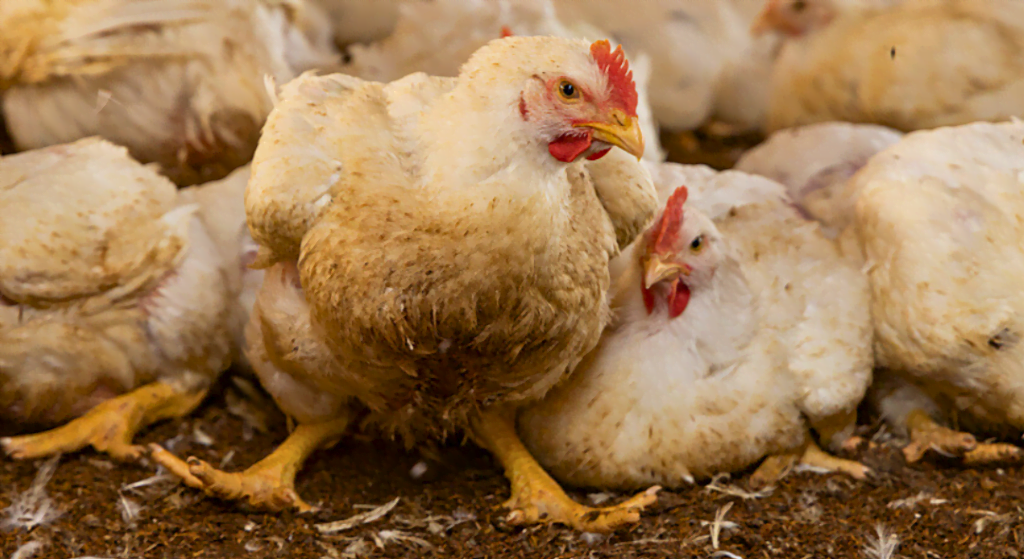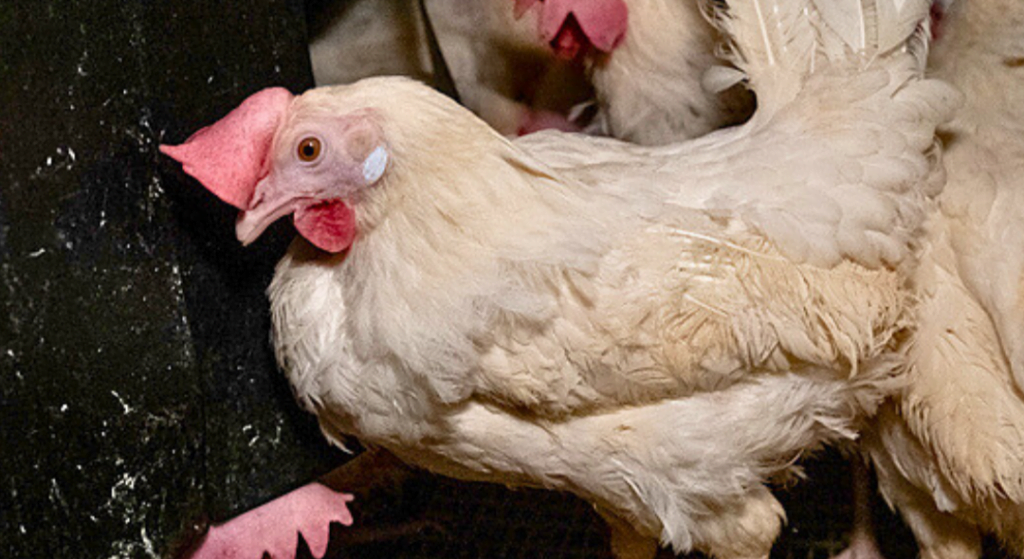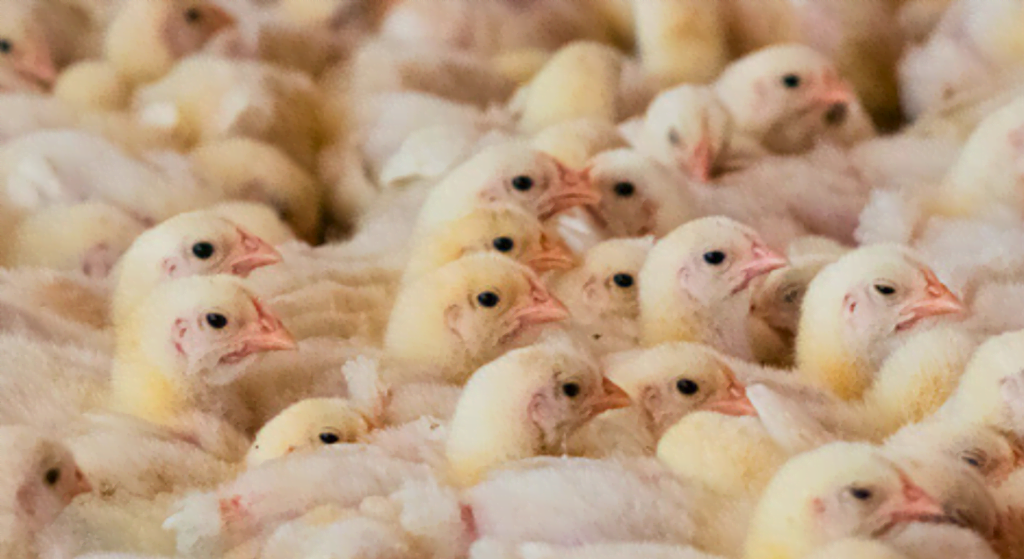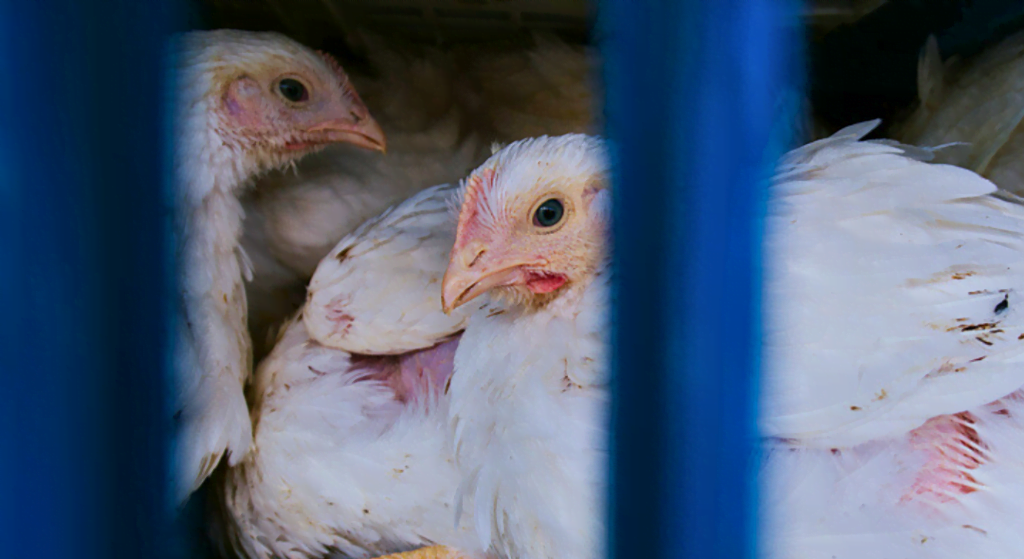With over 22 billion¹ worldwide, chickens are the most common bird species in the world. Yet, chickens are seldom recognized for anything other than their meat.
“Broiler” chickens belong to the same species as laying hens but are of different breeds. They are curious birds with amazing abilities.
or example, chickens—including laying hens—are capable of deductive reasoning and arithmetic. They can also perceive intervals of time, anticipate future events and demonstrate consistent abilities of “episodic memory”.2
This type of memory involves events that an individual has personally experienced or anticipates experiencing, including the place, time and emotional state of the moment. It could be a food eaten the previous day or an activity planned for the future. This memory is also referred to as “autobiographical memory”.
While red meat consumption is declining in Canada, the demand for chicken is on the rise. Since chickens are smaller, this has resulted in the slaughter of even more animals. In 2022, some 194 million broiler chickens were slaughtered in Quebec alone. That’s 10 million more than the year before.3
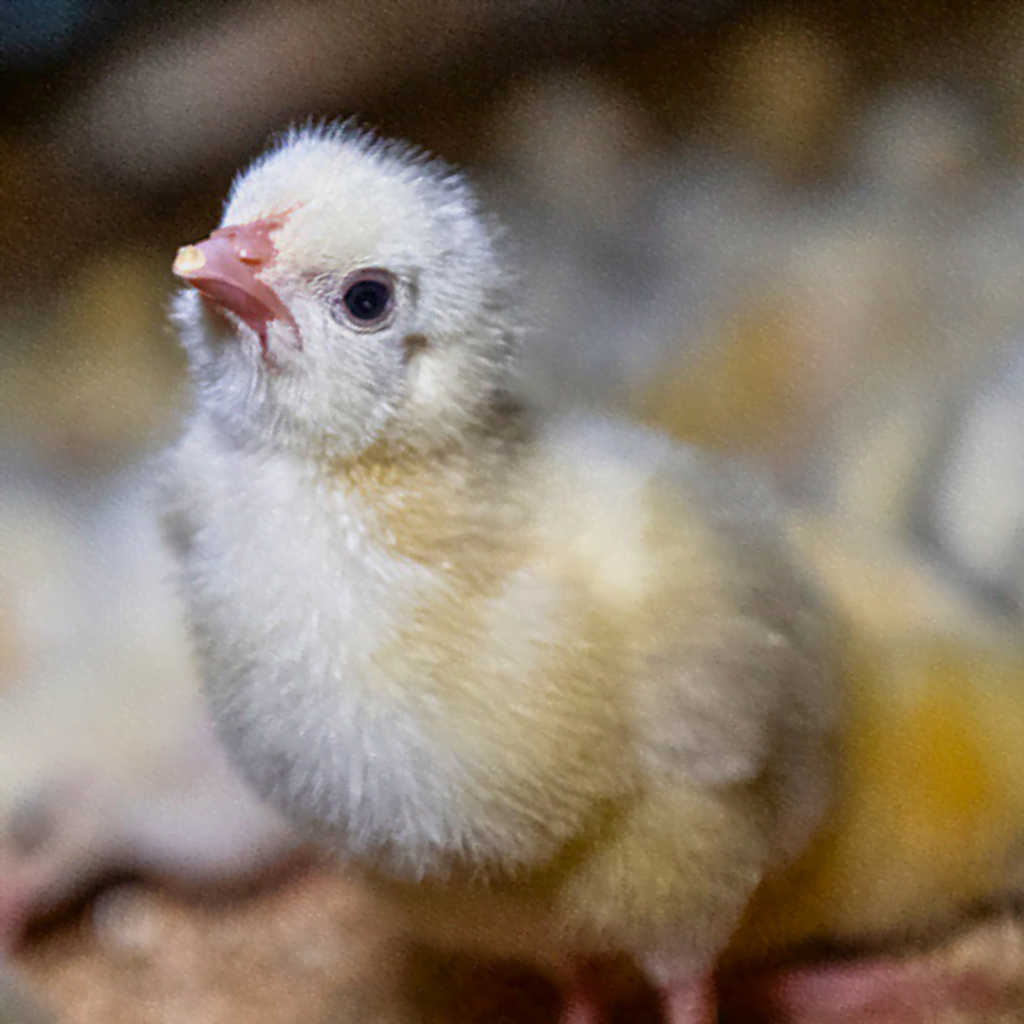
Did you know?
Chickens are descendants of the red junglefowl (Gallus gallus), an elegant bird native to Southeast Asia. They are related to turkeys, quails, partridges, pheasants and even peacocks!
Fig. 4 An Indian Red Junglefowl rooster, the ancestor of domestic chickens.
Life as a chicken in Quebec
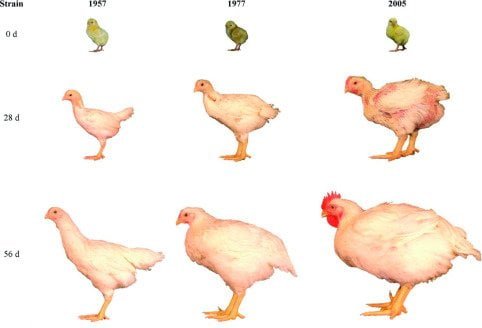
Chicks begin their lives in a hatchery, where the eggs are artificially incubated. Within their first 48 hours of life, they are transported to a producer, who will fatten them up in a large, densely packed “free-run” barn. They stay there for a few weeks, depending on what final weight is desired for them.4
Due to genetic selection, broiler chicken breeds grow extraordinarily fast. This trait is desirable for an agri-food industry seeking profit.5 However, this rapid growth has consequences on the animals’ health and well-being. Broiler chickens are more prone to certain pathologies, like cardiac arrhythmia, and they fatten so quickly that, toward the end of their short lives, many struggle to stay standing on their legs.
Chickens raised in high-density facilities are more susceptible to sudden death syndrome, which typically kills between 0.5% to 4% of commercial chickens.⁶
While the chickens are not confined to narrow cages like laying hens, the sheer quantity of birds means each individual has very little space. These living conditions are stressful and make it difficult to observe these animals’ cognitive and emotional capacities.
Capturing the birds to transport them to the slaughterhouse is also a major source of stress and even injury for them. The chickens are caught, held upside-down by their legs7 and then crammed into crates that are stacked onto trucks. Chickens are normally between five4 et and nine weeks old when they are sent to the slaughterhouse.8 As a result, a broiler chicken may live just 35 days.
In Quebec, the quantity of chickens killed annually is measured by weight rather than by the number of individuals. In 2021, the province produced 348 million kilograms of eviscerated chicken carcasses.8
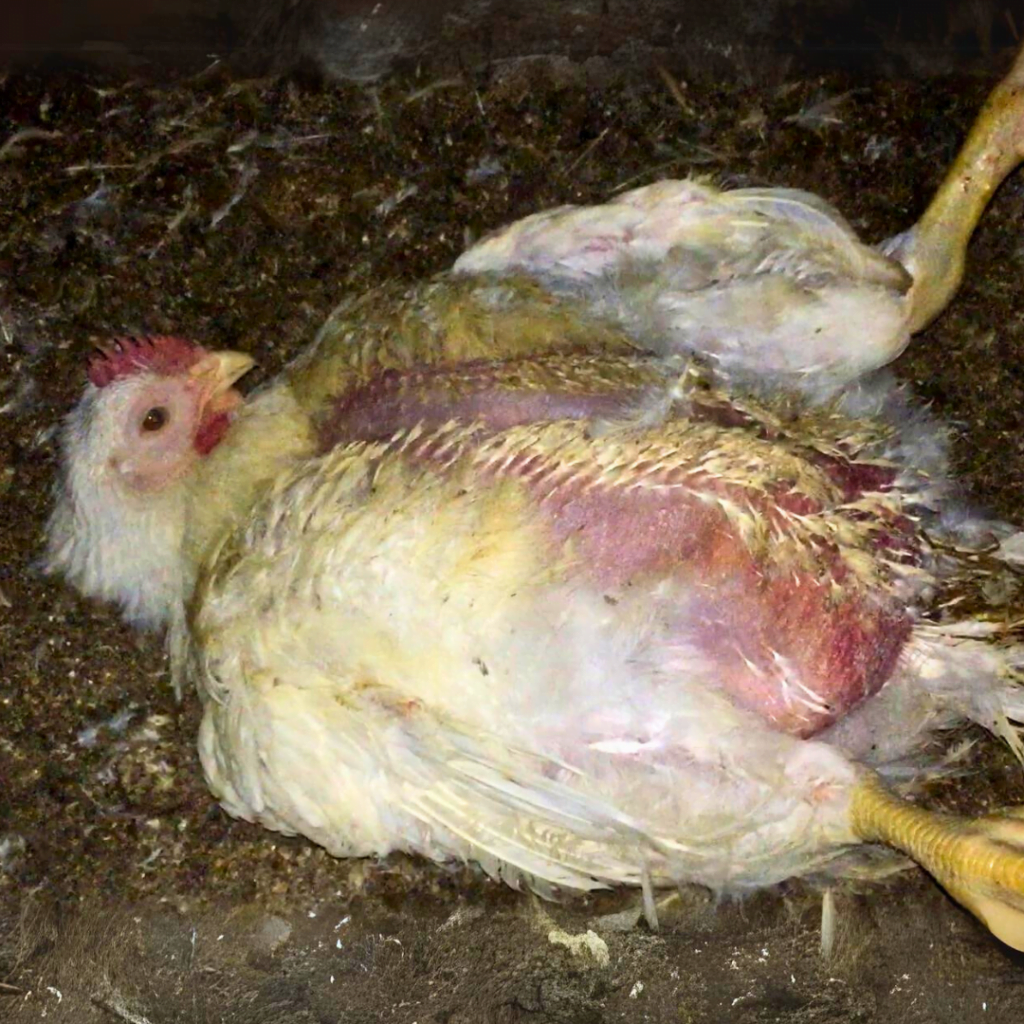
Current industry practices⁹
Chickens raised for meat in Quebec are subject to numerous practices that are incompatible with animal welfare, including the use of stressful and violent on-farm “euthanasia” methods. For example, decapitation, cervical dislocation or manual blunt force trauma, which involves striking the bird’s head. This method requires great precision, and the blow must be quick and firm enough to cause death. Improper application of blunt force trauma can result in temporary paralysis, significant suffering and great stress. “Euthanasia” by gas inhalation and the grinding of chicks aged three days or less are other permitted practices that also cause animals immense distress.
What you can do to help chickens
You can start by learning about them! Here are a few ways you can help these birds:
Sign to protect them. If you haven’t already done so, we encourage you to sign our manifesto calling for a regulatory framework governing the living conditions of chickens and other farmed animals in Quebec, endorsed by nearly 40 well-known public figures in Quebec. This manifesto aims to amend laws so that these animals finally receive the protection they deserve.
Learn more about chickens by listening to the French-language episode “Poulets et dindons, des animaux surprenants”from our podcast Au nom des animaux. It is also available on Google Podcasts, Spotify and Apple Podcasts. And encourage your friends and family to listen to it!
Another way to change the living conditions of animals like chickens is to write to your Member of the National Assembly.
But the most effective way to help chickens is to reduce or eliminate your consumption of chicken. When you do, you tackle the problem at its source. You can also advocate for the adoption of policies that promote a sustainable food transition.
Photo credits:
- Banner photo: © Jo-Anne McArthur / We Animals Media
- Fig. 1 Photo: © Molly Condit / Sinergia Animal / We Animals Media
- Fig. 2 Photo: © Abigail Messier / We Animals Media
- Fig. 3 Photo: © Jo-Anne McArthur / Animal Equality / We Animals Media
- Fig. 4 Photo: © Abhishek Das, eBird
- Fig. 5 Photo: © Elsevier, « Growth, efficiency, and yield of commercial broilers from 1957, 1978, and 2005 ». https://www.sciencedirect.com/science/article/pii/S0032579119385505
- Fig. 6 Photo: © Mercy for Animals
- Fig. 7 Photo: © Jo-Anne McArthur / Animal Equality / We Animals Media
- Fig. 8 Photo: © Victoria de Martigny / We Animals Media
Sources:
- 1 https://www.statista.com/statistics/263962/number-of-chickens-worldwide-since-1990/
- 2 https://assets.farmsanctuary.org/content/uploads/2020/05/27060655/TSP_CHICKENS_WhitePaper.pdf
- 3 https://www.ledevoir.com/societe/consommation/777140/consommation-deux-millions-d-animaux-abattus-chaque-jour?fbclid=IwAR2W4DFDYwG0R1qQ1SNhl-S7TC40J74dBFjITBt2cKiw9NThqrecNUYmboM
- 4 https://parlonspoulet.ca/de-la-ferme-jusqua-chez-vous/ferme-delevage/
- 5 https://www.sciencedirect.com/science/article/pii/S0032579119385505
- 6 https://www.merckvetmanual.com/poultry/sudden-death-syndrome-of-broiler-chickens/sudden-death-syndrome-of-broiler-chickens
- 7 https://parlonspoulet.ca/de-la-ferme-jusqua-chez-vous/transport/
- 8 https://www.quebec.ca/agriculture-environnement-et-ressources-naturelles/agriculture/industrie-agricole-au-quebec/productions-agricoles/elevage-volaille-poulet-dindon
- 9 https://www.nfacc.ca/pdfs/codes/poultry_code_FR.pdf

